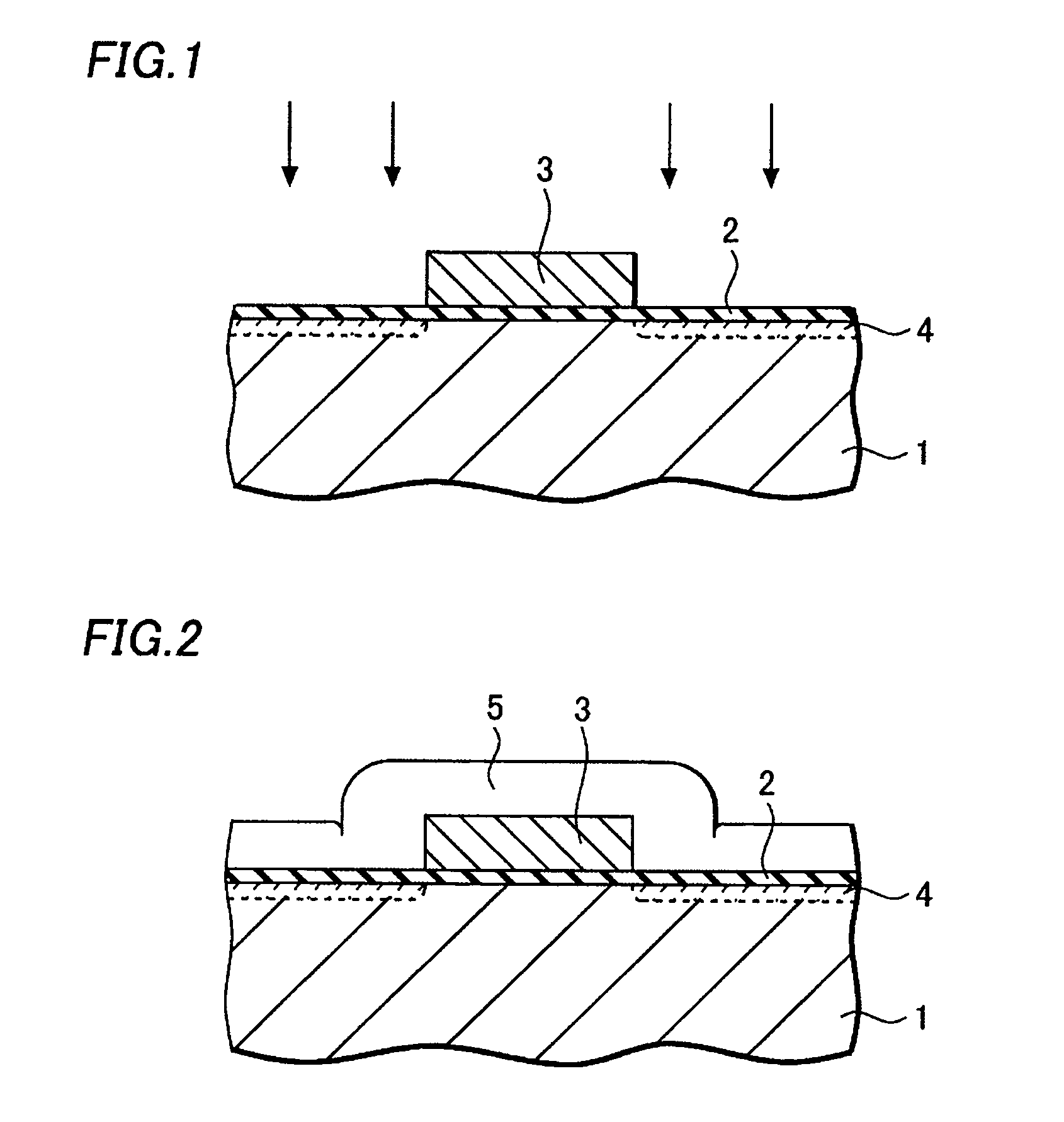Manufacturing method of semiconductor device
a manufacturing method and semiconductor technology, applied in the direction of semiconductor devices, electrical devices, transistors, etc., can solve the problems of reducing the hampered reaction between the transition metal and silicon, and the increase of the resistance of the gate electrode and the source and drain regions, so as to reduce the effect of reducing the thickness of the silicon substrate and reducing the selection ratio
- Summary
- Abstract
- Description
- Claims
- Application Information
AI Technical Summary
Benefits of technology
Problems solved by technology
Method used
Image
Examples
Embodiment Construction
[0038]A method of manufacturing a semiconductor device according to an embodiment of this invention will be described hereafter, referring to FIGS. 1–8.
[0039]A silicon oxide film of about 5 nm in thickness is formed on a silicon substrate 1 by thermal oxidation, as shown in FIG. 1. It becomes a gate insulation film 2. A polysilicon film of about 200 nm in thickness is formed on the gate insulation film 2. A gate electrode 3 is formed by shaping the polysilicon film by photolithography and etching.
[0040]Although not shown in the figure, it should be noted that a silicon oxide film or the like may be formed on the polysilicon film and used as a hard mask to enable higher precision etching.
[0041]After that, low impurity concentration regions 4 are formed by injecting a dose of 1–5×1014 (ions / cm2) of impurity ions, e.g. phosphorus ions, into regions 10–20 mn deep from a surface of the silicon substrate 1, using the gate electrode 3 as a mask. After the injection, N2 annealing, i.e. heat...
PUM
| Property | Measurement | Unit |
|---|---|---|
| thickness | aaaaa | aaaaa |
| thicknesses | aaaaa | aaaaa |
| thicknesses | aaaaa | aaaaa |
Abstract
Description
Claims
Application Information
 Login to View More
Login to View More - R&D
- Intellectual Property
- Life Sciences
- Materials
- Tech Scout
- Unparalleled Data Quality
- Higher Quality Content
- 60% Fewer Hallucinations
Browse by: Latest US Patents, China's latest patents, Technical Efficacy Thesaurus, Application Domain, Technology Topic, Popular Technical Reports.
© 2025 PatSnap. All rights reserved.Legal|Privacy policy|Modern Slavery Act Transparency Statement|Sitemap|About US| Contact US: help@patsnap.com



